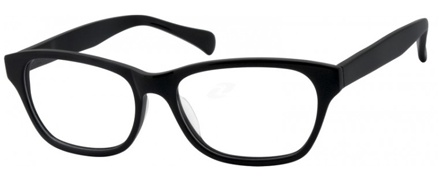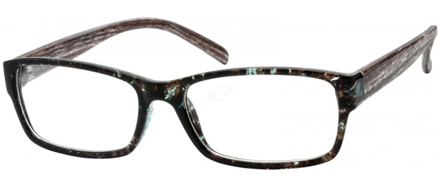What Is The Difference Between Progressives And Bifocals?
- BY Ryan
- IN Glasses Facts
This post was revised on April 12, 2023.
Sometimes, progressive and bifocal lenses are confused with being the same thing. To put it simply — they aren’t. This confusion probably occurs because they are both multi-vision lenses rather than being a single vision lens.
What is the difference between Progressives and Bifocals?
The easiest way to tell the difference is that progressives have no noticeable line in the lenses, while bifocals do (usually). The transition between near and far areas in progressive lenses is unnoticeable.
Bifocal lenses for eyeglasses are so named because there are two distinct sections. These two focal points correct both distance and close-up vision respectively. The different areas are visibly noticeable just by picking up the eyewear and looking at the lenses.
Some bifocals have this dividing line straight across, while in other bifocal lens types, a half-moon shape is a part of the lower part of the eyeglass lenses. So, unlike single-vision lenses with only one type of eyesight correction in each lens, there are always two types in bifocals which allow them to correct both nearsighted and farsighted viewing problems.
At first glance, progressives may appear to be single-vision eyeglasses since they don’t have a visible dividing line or any shape noticeable in the lenses. What progressives have is a middle area, often called the intermediate section, that is invisible, yet acts to transition the two vision-correcting parts for farsightedness and nearsightedness.
Which Is Better Bifocals or Progressives?
Whether bifocals or progressives are going to be the better choice for vision correction depends on what your vision problems are and what your optometrist recommends. Line-free progressive lenses are often prescribed for people with presbyopia. Presbyopia simply means a reduction in the eye’s ability to focus brought about by aging. Yup, just like everything else seems to deteriorate the older we get, the lenses of our eyes aren’t any different. We lose proteins in our lenses which causes them to be harder and less flexible. This loss of flexibility results in less focusing ability for our eyes, which is why so many people over 40 begin noticing blurry vision and having to hold that shopping list or morning newspaper closer than usual to be able to read it.
Bifocals can be the better choice for people with difficulty seeing objects from a distance as well as close up. These may take a little getting used to since the top and bottom areas of vision correction are so different. Progressives offer such a smooth transition between the two fields to give the eyes a more gradual change when going from distance to close-up viewing, or vice-versa.
Your eye specialist can advise you whether progressives or bifocals are the better choice for you. For those who need them, the strongly divided sections of bifocals can make a pleasant difference in daily living. In some cases, reading glasses can be an alternative to progressive lenses or bifocals. Again, it’s always best to discuss your vision correction options with your optometrist. Once that is done though, you can shop on your own for fantastic new frames! That is the fun part, after all.


